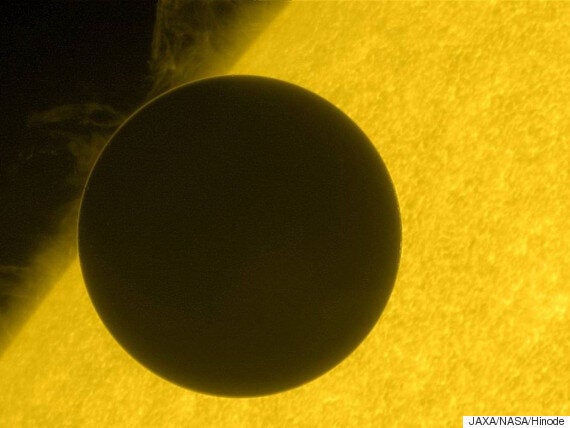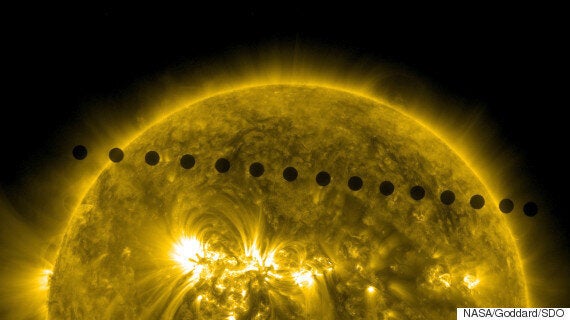Savour this, because we'll probably never see it again.
The Hinode Solar Optical Telescope has captured a stunning 'once in a lifetime' picture of Venus passing in between the Earth and the Sun.

Venus' transit across the surface of the Sun is -- in human terms at least -- incredibly rare, taking place every 115 years.
Luckily the Hinode Earth-orbiting satellite was able to capture the entire event using its Solar Optical Telescope.
Scientists led by Fabio Reale of the University of Palermo then examined the pictures, observing the ways in which the Sun's light interacts with Venus' atmosphere.
The team analysed the differences in size of Venus through various wavelengths, by noticing the changes they should be able to create a more accurate picture of the elements found on the planet's surface.
This isn't just about working out what Venus is made of, it's also about preparing for future missions to the planet explains Reale.

“Learning more about the composition of the atmosphere is very important for understanding the braking process for spacecraft when they enter the upper atmosphere of the planet, a process called aerobraking,”
READ MORE:
Another important part of the process was about capturing life on the side of the planet. Earth can only see the dark side of Venus, so by measuring what was happening at the outer fringes of the planet as it passed behind the Sun the team were able to get a never-before-seen view.
“The planet appeared very round in all wavelengths,” said Pesnell. “If the transition from day to night were different from the transition from night to day, you would expect a bulge in the atmosphere on one side of the planet.”